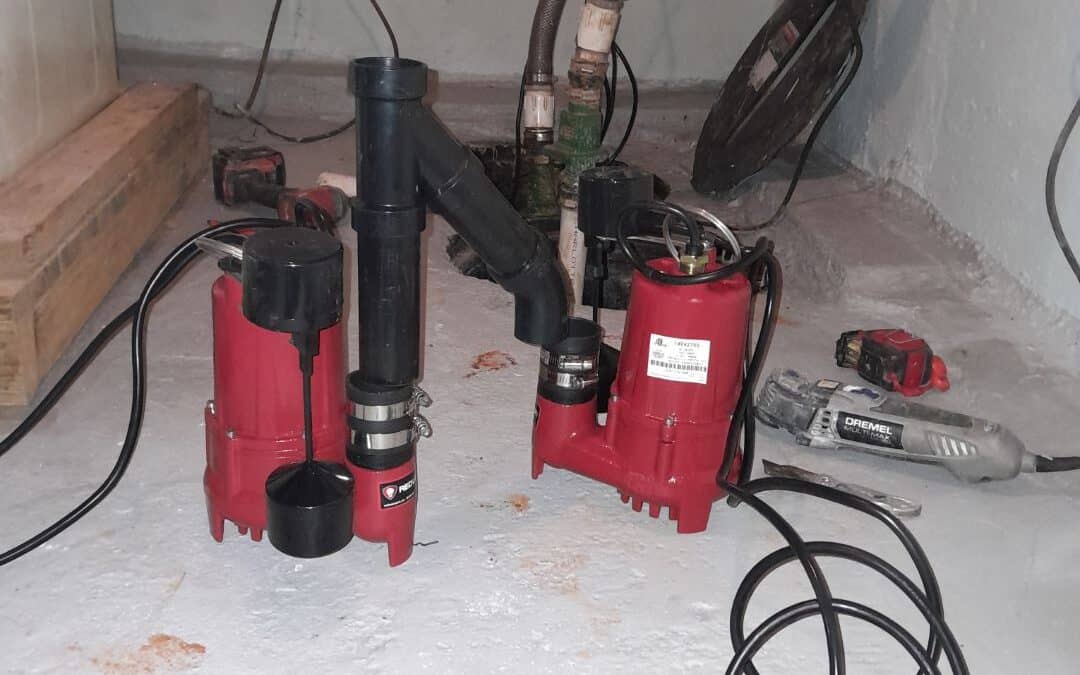How to Unclog a Pro Series Sump Pump: A Step-by-Step Guide
A clogged sump pump can lead to water damage and disrupt its ability to protect your home. Whether it’s debris buildup or mechanical issues, addressing the problem quickly is key to avoiding costly repairs. This guide outlines clear, actionable steps to unclog your sump pump and keep it running smoothly.
Let’s get started!
Signs Your Sump Pump Might Be Clogged:
A sump pump is your home’s frontline defense against basement flooding, but a clog can compromise its performance without warning. The key to avoiding major water damage lies in catching the early symptoms of a problem. Many signs of a clogged sump pump are subtle, but knowing what to look for can save you from significant repairs and a messy cleanup.
Keep an ear and eye out for these common indicators that your pump may not be functioning properly:
- Strange Noises, Like Grinding or Rattling
- Water Draining More Slowly Than Usual in the Sump Pit
- Frequent Cycling, Even With Little or No Water Movement
- Musty Odors or Small Amounts of Water Pooling in Your Basement
Common Causes of Clogged Sump Pumps:
Understanding the root causes of sump pump clogs can help you prevent them in the first place. Pumps are designed to handle water flow efficiently, but foreign materials, wear, and improper maintenance can lead to blockages. By identifying the primary culprits behind clogs, you’ll not only be able to address current issues but also take proactive steps to keep your pump running smoothly for years to come.
- Debris Buildup or Sediment Collecting in the Pump or Discharge Pipe
- A Blocked Intake Strainer or Impeller
- Mechanical Wear or Broken Components Within the Pump
Tools and Supplies You’ll Need to Unclog Your Sump Pump
Before you try unclogging your sump pump, it’s essential to have the right tools on hand. Proper preparation not only makes the task more manageable but also ensures your safety while working. With just a handful of common supplies, you’ll be fully equipped to tackle debris, clear blockages, and restore your pump’s optimal performance.
Here’s what you’ll need for an efficient and hassle-free repair.
- Rubber Gloves
- Bucket
- Garden Hose
- Flashlight
- Screwdriver
How to Unclog a Sump Pump: Step-by-Step Insutructions
A clogged sump pump doesn’t have to spell disaster for your home. While it might seem intimidating, unclogging your pump can be a straightforward process when approached methodically. By following these simple yet effective steps, you can restore your sump pump’s functionality and safeguard your basement from potential water damage. Take your time, follow these instructions carefully, and soon your pump will be working as good as new.

Turn Off the Power: Unplug the pump or shut off its circuit breaker for safety.

Remove the Pump: Lift it carefully out of the sump basin, avoiding damage to the discharge lines.

Inspect for Debris: Look at the intake strainer, impeller, and discharge pipe for visible blockages or sediment.

Clean Thoroughly:
-
-
Use a garden hose to flush out dirt and debris.
-
For stubborn clogs, gently use a screwdriver or plumbing snake.
-

Reassemble and Test:
-
-
Place the pump back in the pit.
-
Plug it in and test it by pouring water into the sump basin. Confirm it operates smoothly and drains properly.
-
How to Unclog a Sump Pump: A Step-by-Step Guide: Final Thoughts
Preventing future clogs is the most effective way to keep your sump pump running smoothly and avoid unexpected repairs. Regularly inspect and clean the intake strainer and discharge lines to ensure debris doesn’t cause blockages. Installing a sump pump cover can significantly reduce the amount of dirt or sediment entering the system. Performing routine maintenance at least quarterly allows you to identify potential issues early and keep your pump functioning efficiently. By prioritizing these steps, you’ll extend the lifespan of your sump pump, protect your home from water damage, and minimize repair costs. Remember, preventing future clogs is all about staying proactive and giving your sump pump the care it needs.
FAQs About Sump Pump Maintenance
How Does a Sump Pump Work?
A sump pump works by removing water from a sump basin, usually located in a basement or crawlspace. It activates automatically when the water level rises, pumping excess water away from your home to prevent flooding.
What Does a Sump Pump Do?
A sump pump protects your property from water damage by removing accumulated water, ensuring your basement stays dry and your foundation remains secure.
How Much Is Sump Pump Installation?
Sump pump installation costs vary based on the type and complexity of the system. If you’re in Long Island, Brooklyn, Queens, or The Bronx, call (631) 980-1800 for a free assessment and expert opinion.
How Does a Sump Pump Work in a Basement?
In a basement, a sump pump collects water from foundation drains into a sump basin. Once the water reaches a certain level, the pump activates to discharge it outside, protecting your basement from flooding.
What Size Sump Pump Do I Need?
The size of the sump pump depends on your home’s drainage needs. If you’re looking for the best sump pump for your home, consider factors like water volume, basement size, and local rainfall. For expert advice, consult a professional.
Where Does Water from a Sump Pump Go?
Water from a sump pump is typically directed away from your property to a storm drain, dry well, or distant area on your land, keeping your foundation dry.
How Long Does a Sump Pump Last?
The lifespan of a sump pump is usually 7–10 years with proper maintenance. Regular checks and timely repairs can help extend its functionality.
What Sump Pump Is Best for a Basement?
The best sump pump for a basement depends on capacity and efficiency. Technically, high-capacity pumps with long lifespans are ideal. We install Pro Series pumps, which exceed regulations and set industry standards for performance, energy efficiency, and durability.
What Sump Pump Lasts the Longest?
High-quality pumps like the Pro Series or cast iron models tend to last the longest due to their robust design and premium materials.
Does a Sump Pump Work Automatically?
Yes, most modern sump pumps operate automatically, using a float switch to activate when water levels reach a certain height.








